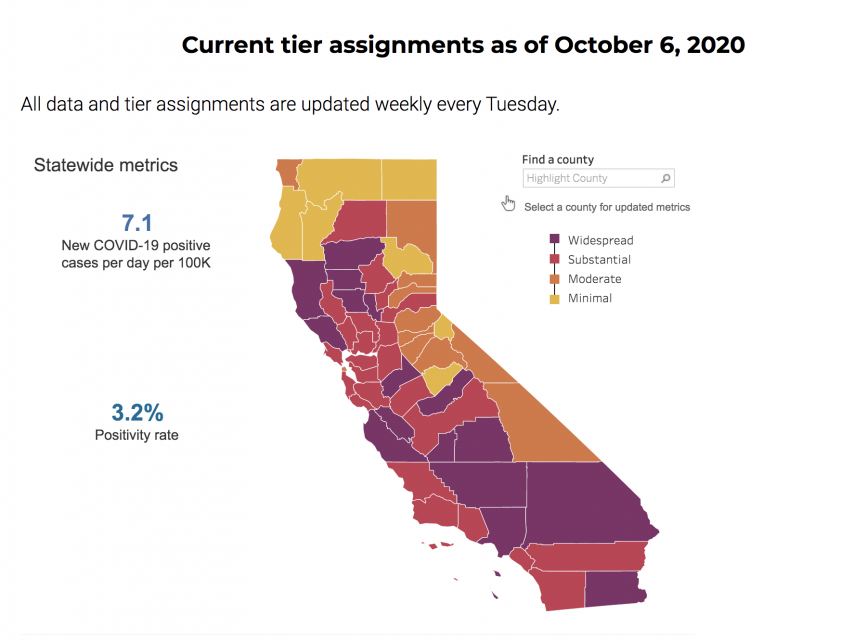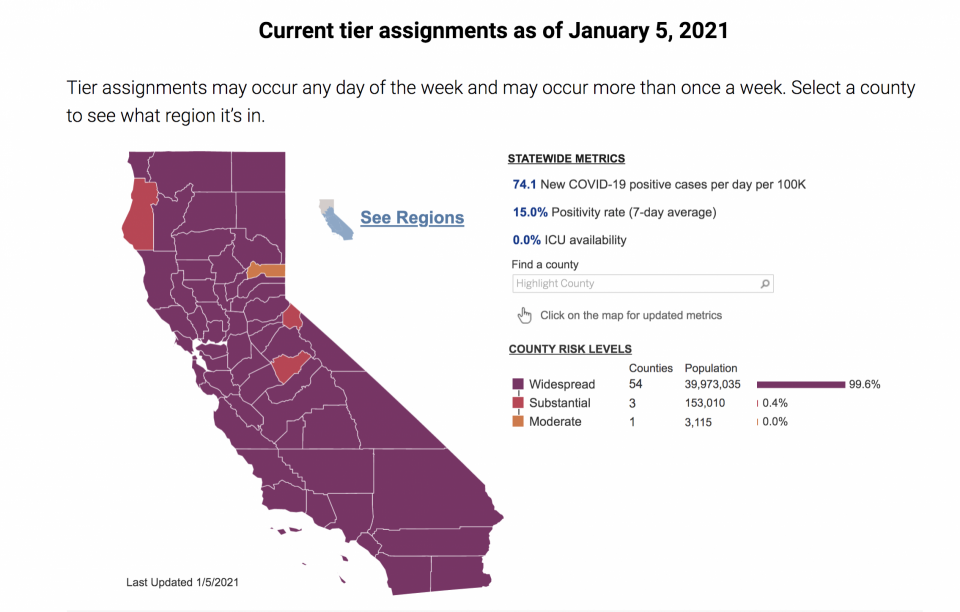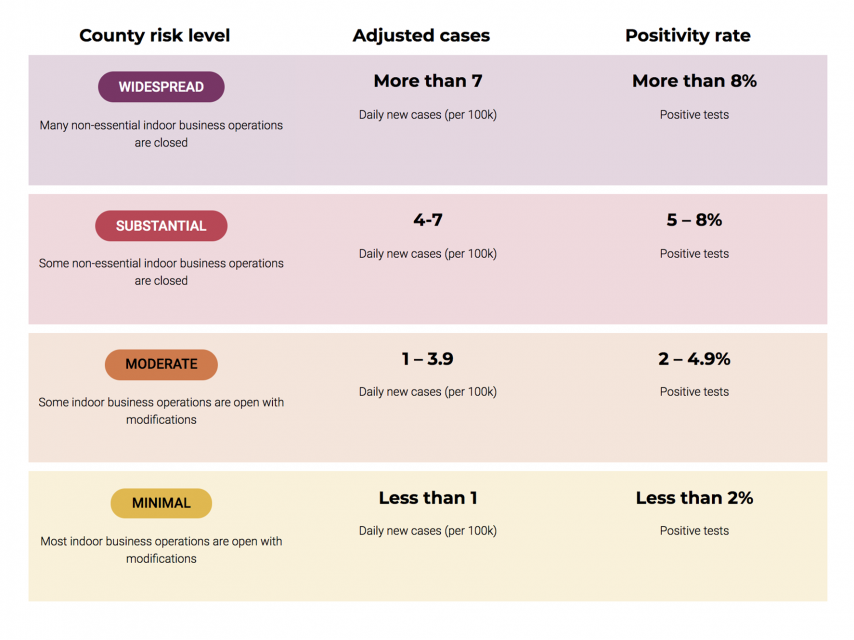The framework and rules guiding California’s gradual emergence from state-mandated closures were revised by Governor Newsom on August 28. The so-called “Blueprint for a Safer Economy” uses a color-coded system with four tiers, into which each county is assigned.
Assignment depends on how widespread COVID-19 is within the county, and relies on a set of indicators and thresholds to measure it. Each tier comes with gradually less restrictive rules that determine what is permissible for most sectors and activities.
Since school and college reopening rules are built on the Blueprint system, and the metrics and rules are modified and adapted on a near-weekly basis, there is a great amount of confusion about the implications of the system and the status of school reopenings.
In the Blueprint, California has embraced a county-level system, which means reopening decisions are left up to districts and individual schools. Add to that several significant exceptions and the chance that a COVID case or outbreak at a school will interrupt reopening plans, there is a messy patchwork of schools in various forms of distance, hybrid, and in-person education taking place across the state.
Understanding the metrics
There are two key metrics the California Department of Public Health uses to track county progress and assess risk: the number of daily COVID-19 cases, the percent of COVID-19 tests results that are positive. In October, a health equity metric was incorporated to the analysis to ensure the most vulnerable communities are also making progress toward lower risk of the virus.
Finally, the population of the county, the relative number of tests being administered, and the stability of a county’s metrics are also accounted for in the assessment that determines which tier a county is assigned.
- The status and data for each county are published weekly on Tuesdays.
What does it mean for schools and colleges?
In counties that are purple or Tier 1, indicating “widespread” risk, TK-12 schools may open for remote or distance learning only. Once a county has reduced risk to “substantial”, it qualifies for the red or Tier 2. If the county can continue to meet the thresholds for tier 2 for two weeks, schools may — but are not required to — reopen for in-person instruction. Counties that continue to progress through to less restrictive tiers may also offer in-person instruction.
All schools offering hybrid or in-person classes must comply with the industry guidance for schools and the Department of Health framework that further specifies actions schools must take when positive cases occur.
For higher education, with very few exceptions, in-person instruction is not permitted in counties that are Tier 1. Once a school reopens for hybrid or full in-person instruction, it is required to comply with industry guidance for higher education.
Complicating and confusing the school reopening rules, however, are several significant exceptions to the baseline rules, especially in TK-12 schools. One exception allows some elementary schools to reopen in person, and others permit schools to offer specialized services to small groups of students of all grades. (There are also more restrictive rules that some counties, such as San Francisco and Los Angeles, have adopted.)
As of October 6, there were 16 of 58 counties still in the purple tier, and schools in 26 counties where distance learning was required, unless a waiver was granted or some students were receiving special services.
Exceptions to county-based monitoring
Waivers for elementary schools
The current statewide guidance includes an exception to the restrictions that K-6 elementary schools may apply for, if they are located in counties that are in the purple/widespread risk Tier 1.
“Small Cohorts” for specialized services
Another exception that schools (any grade) may pursue in order to offer “targeted, specialized support” for the state’s most vulnerable groups. The guidance indicates this could include students with disabilities, English learners, students at higher risk of further learning loss or not participating in distance learning, students at risk of abuse or neglect, foster youth and students experiencing homelessness.
In order to bring students back under these circumstances, the school must comply with the guidance for small cohorts, which restricts classes to groups of 16, including teachers and aides, and restricts the total number of students who can be brought back to 25 percent of the school’s population.
Where does CFT stand on county-based guidelines?
Since the earliest school reopening discussions began, CFT has called for a statewide approach in lieu of guidance that allows for county-by-county variation and for safety thresholds that require the overall state metrics for case and positivity rates guide reopening anywhere. CFT has also opposed the granting of waivers that allow elementary schools to circumvent the prohibition against reopening when counties are in the Widespread Risk category
In CFT’s latest correspondence to Governor Newsom, the union
argued that it is too risky to allow schools to reopen for
in-person instruction until a county has met the requirements for
the orange/Moderate risk tier.
— By Aimee Shreck, CFT Research Director



